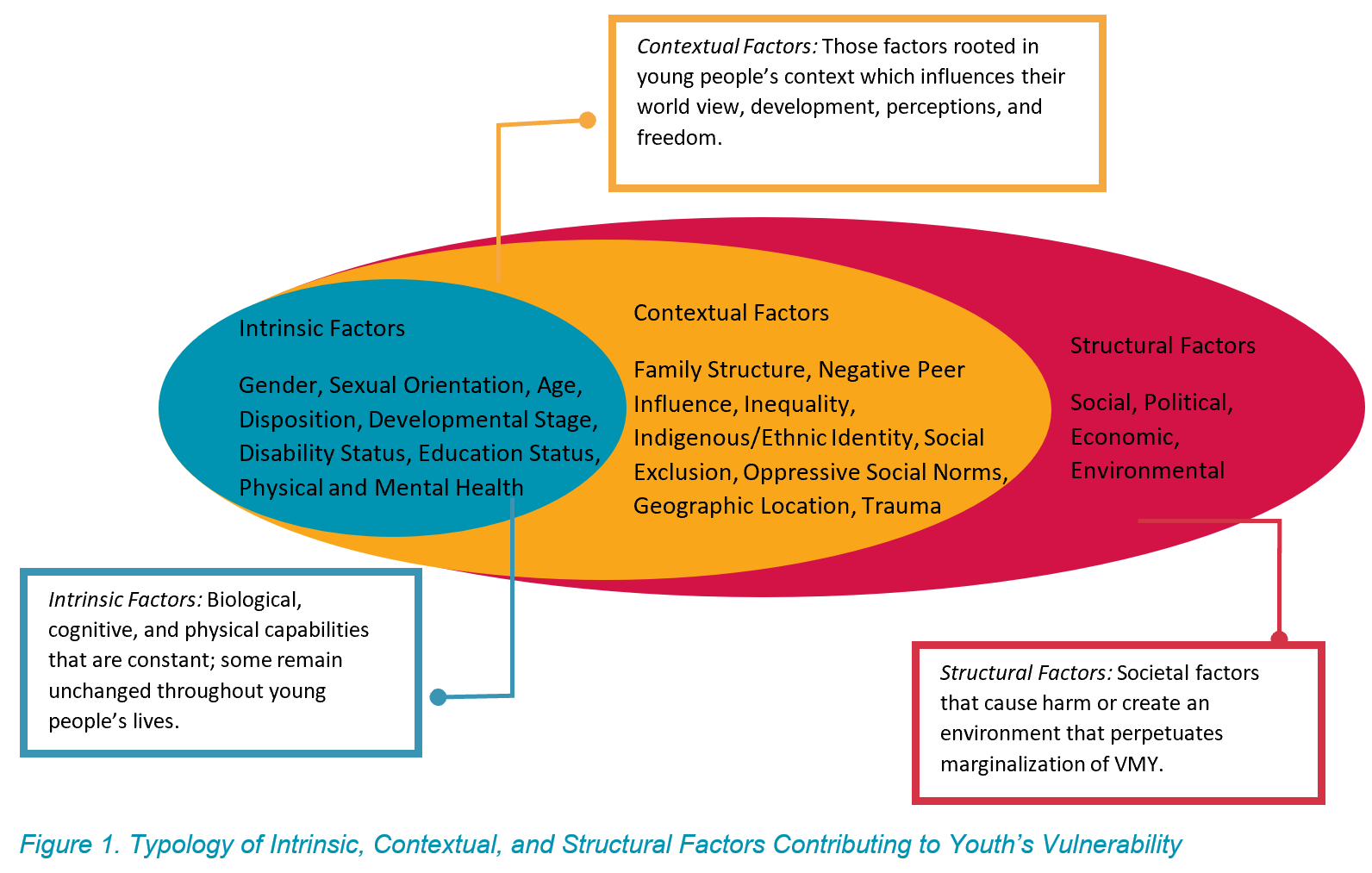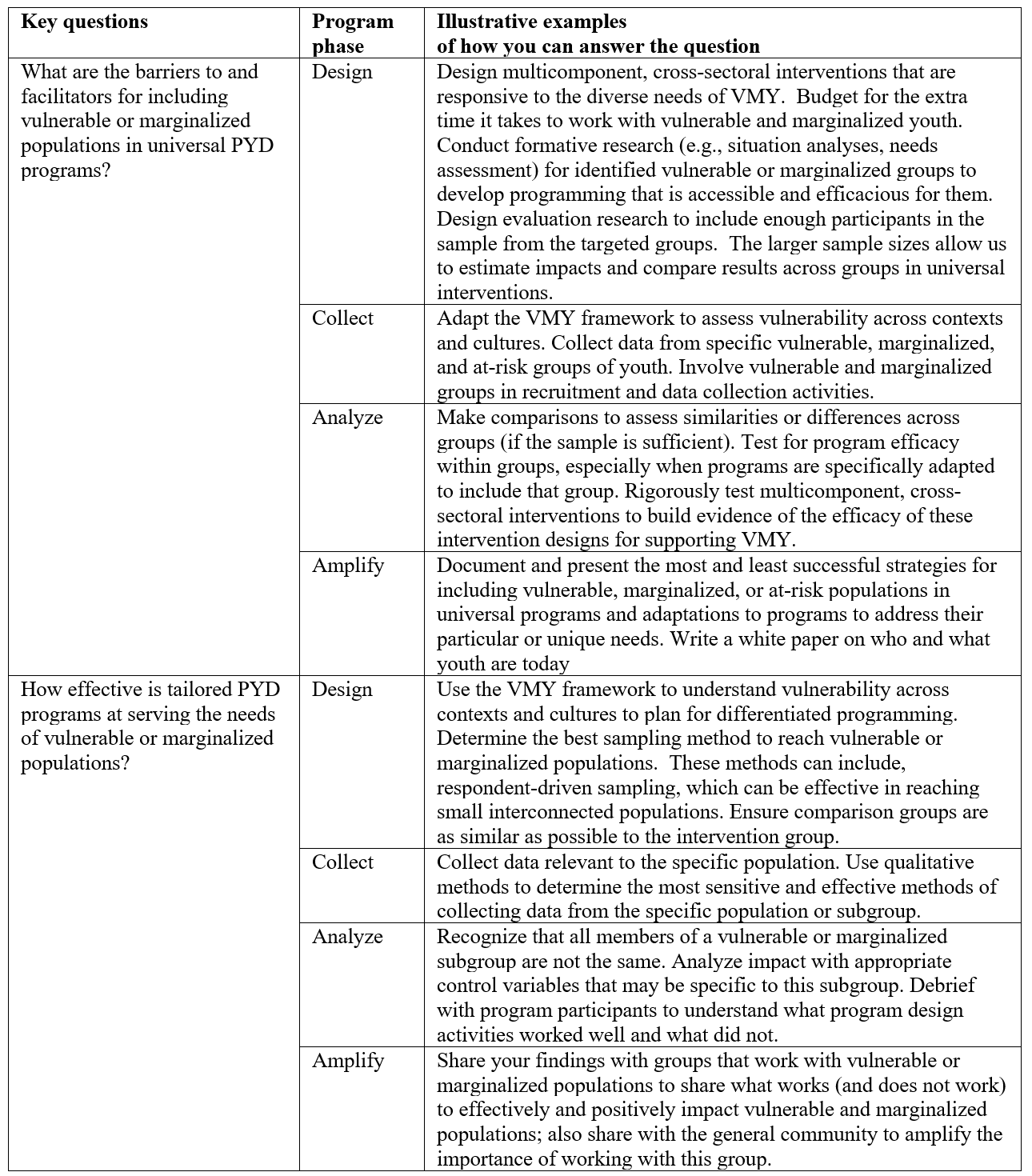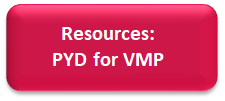PYD for Marginalized or Vulnerable Populations
Responding to the gaps identified in the Systematic Literature Review on Positive Youth Development in Low-and Middle-Income Countries, USAID under YP2LE specifically explored how PYD programs impact the marginalized and vulnerable youth.
The Systematic Literature Review of Positive Youth Development Impacts on Marginalized and Vulnerable Youth found that programs use a PYD-aligned approach and benefit vulnerable and marginalized youth when using cross-sectoral and multicomponent approaches. While definitions of vulnerability are specific to context and culture, frameworks exploring the vulnerability of youth need to examine intrinsic, contextual, and structural factors that impact access for vulnerable and marginalized populations.
YouthPower Learning's 2017 systematic review found a significant gap in evidence for PYD programming impacting vulnerable or marginalized populations. That report noted that vulnerable or marginalized youth populations are those that, for any reason, tend to be excluded from "universal" youth programming that could benefit them. These populations were also not explicitly targeted for youth-focused programming. In 2020, YP2LE completed a systematic literature review specifically on positive youth development impacts on marginalized and vulnerable youth. The review found that the way programs conceptualize vulnerable youth depends on the culture, context, and available tools for measuring vulnerability. Moreover, the tools are often limited in their ability to measure vulnerability. The tools are also tailored to specific dimensions of vulnerability (e.g., HIV status, sex, experiences of GBV) rather than adopting an intersectional lens. The authors developed an intrinsic, contextual, and structural (ICS) typology to define, frame, and measure the social determinants of vulnerability and identify entry points in intervention activities to vulnerabilities of youth in LMICs. This framework allows programs to identify significant risks among vulnerable populations of youth, measure the risks, and target improvements through strategic programming to promote youth agency and foster resilience.

Using this typology, YP2LE identified five social determinants for a range of vulnerabilities discussed in the selected studies: poverty, family disposition, gender, government, and race and ethnicity. These social determinants of youth vulnerability can act independently or can compound to produce more significant effects. Poverty was the most influential social determinant and influenced how youth engaged in risk behaviors.
Programs that have prioritized vulnerable and marginalized youth as beneficiaries and use a PYD approach often address assets, agency, and the enabling environment. However, the programs often overlook youth contribution. The lack of focus on contribution highlights that vulnerable and marginalized youth are often not allowed to meaningfully participate in programming opportunities to share their experiences and provide recommendations on how to best support their needs. Ensuring their participation and meaningful engagement requires recognition of stigmatizing factors (e.g., HIV/AIDS status), structural (e.g., poverty), and contextual (e.g., gender norms) barriers to involvement and leveraging community support and policies that address issues of accessibility. Additionally, we need policy initiatives and legal frameworks that support 1) cross-sectoral and integrated focus of programs, 2) safeguard and improve access to youth-friendly services, and 3) promote the use of social norms assessments into national and local youth development frameworks.
The international development community should design PYD programs to apply to all youth (aka "universal" programs) - or tailor the programs to apply to a particular subgroup of youth. Universal prevention strategies are designed to reach the entire population without regard to individual risk factors. We design these programs to reach a large audience of youth. An inclusive universal approach is best for safeguarding the well-being of individuals who face discrimination. Participation in a universal program does not reveal aspects of a person's identity, and the inclusion of diverse populations in a universal program can reduce stigma. Selective (or tailored) interventions target subgroups of the general population known to be at risk for adverse outcomes or have been denied resources or excluded from benefits. Inclusive approaches are a useful strategy when the needs of a subgroup are known to be different than the general population. This approach is also practical when youth identify with a specific subgroup and linking them to that group is unavoidable or does not introduce further hardship. Insights from YP2LE's 2020 systematic review about the context in which universal or tailored PYD programs are most appropriate include the following question hyperlinks.
Key questions and illustrative sub-questions
- How are vulnerable and marginalized groups experiencing these barriers and facilitators?
- How effective are universal PYD programs at serving the needs of vulnerable and marginalized sub-groups?
- What impact does tailoring PYD programs have on reducing barriers to programming specific for this population?
- How do we work with special populations to create, design, and implement programs for them?
Click the button below to access recent learnings on PYD for Vulnerable Populations.
Potential Strategies to Address PYD for Vulnerable or Marginalized Populations:








